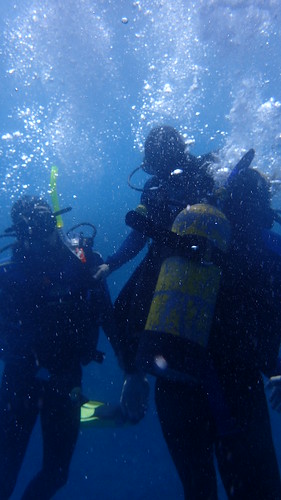Owth. Differentiating involving domains in children and studying its correlates is
Owth. Differentiating involving domains in young children and studying its correlates is very important for two motives: First, since the five domains happen to be recommended to reflect somewhat disparate psychological processes in adults [4], they may enhance our common understanding in the longterm outcomes of trauma exposure in youngsters as well [3]. Second, because youngsters could differ with regard for the specific domains in which growth is knowledgeable, studying common also as domain distinct correlates of development could contribute for the improvement of personcentred, tailored interventions with a focus on good psychological processes.Strategies Participants and protocolThirtysix randomly chosen schools in PubMed ID:https://www.ncbi.nlm.nih.gov/pubmed/24713140 Utrecht, a province in the middle of the Netherlands, participated in the study, with 3787 prospective respondents (aged 82 years) in the last four grades of major college. A total of 770 kids, whose parents signed informed consent (by means of an optingin procedure) and who have been present around the day in the data collection, filled out the questionnaires. The study protocol, like the consent procedure, was approved by the Health-related Ethics Committee on the University Medical Centre Utrecht. Parentsguardians supplied written informed consent for the children. Children who attended college around the day of information collection and whose parents had supplied  consent, have been free of charge to participate or not. All participated and filled out SCD inhibitor 1 biological activity questionnaires in quiet classroom setting (see Alisic and colleagues for facts on the procedures; [7]). For the existing study we selected these kids who reported an adverse occasion (n 290). The mean age of your youngsters was 0.32 years (SD .eight). Slightly extra girls (52.two ) than boys (47.8 ) had been integrated inside the existing study, but this didn’t differ substantially from the proportion of girls within the bigger sample (50.two ).MeasuresAdverse events. The youngsters have been asked whether or not they were exposed to a stressful or traumatic event. Eleven adverse events had been listed (i.e disaster, accident, war, domestic violence (self or other), neighborhood violence (self or other), sexual assault, injurydeath loved a single, significant healthcare condition as well as other adverse occasion). Subsequently, the young children had been asked to describe their worst expertise ever (this may be either one of several events reported just before or yet another occasion) and to indicate how lengthy ago it took place. Exposure to an adverse event wasPLOS A single DOI:0.37journal.pone.045736 December 29,4 Correlates of Posttraumatic Growthconsidered present when the described occasion fulfilled the A criterion for PTSD on the DSMIVTR. Two raters independently decided regardless of whether the occasion fulfilled the criterion or not. In case of disagreement (Cohen was .58), a third rater created the final choice. Criterion A2 for PTSD was not examined due to the fact of achievable recall bias. For the present study we incorporated children exposed to both traumatic and nontraumatic (but seriously upsetting) events and took variations in between them into account by like severity from the occasion as a covariate. Posttraumatic development. The Revised Posttraumatic Development Inventory for Youngsters (PTGICR, psychometrics see; [24]) is an adaption with the Posttraumatic Development Inventory, which is regularly used in adults. For the PTGICR, 0 from the original 2 products happen to be chosen that are well accessible to kids. The 0 things have a 4point Likert scale (ranging from 0 no transform to 3 loads of change) as well as a “don’t know” alternative. For the Dutch version, a.
consent, have been free of charge to participate or not. All participated and filled out SCD inhibitor 1 biological activity questionnaires in quiet classroom setting (see Alisic and colleagues for facts on the procedures; [7]). For the existing study we selected these kids who reported an adverse occasion (n 290). The mean age of your youngsters was 0.32 years (SD .eight). Slightly extra girls (52.two ) than boys (47.8 ) had been integrated inside the existing study, but this didn’t differ substantially from the proportion of girls within the bigger sample (50.two ).MeasuresAdverse events. The youngsters have been asked whether or not they were exposed to a stressful or traumatic event. Eleven adverse events had been listed (i.e disaster, accident, war, domestic violence (self or other), neighborhood violence (self or other), sexual assault, injurydeath loved a single, significant healthcare condition as well as other adverse occasion). Subsequently, the young children had been asked to describe their worst expertise ever (this may be either one of several events reported just before or yet another occasion) and to indicate how lengthy ago it took place. Exposure to an adverse event wasPLOS A single DOI:0.37journal.pone.045736 December 29,4 Correlates of Posttraumatic Growthconsidered present when the described occasion fulfilled the A criterion for PTSD on the DSMIVTR. Two raters independently decided regardless of whether the occasion fulfilled the criterion or not. In case of disagreement (Cohen was .58), a third rater created the final choice. Criterion A2 for PTSD was not examined due to the fact of achievable recall bias. For the present study we incorporated children exposed to both traumatic and nontraumatic (but seriously upsetting) events and took variations in between them into account by like severity from the occasion as a covariate. Posttraumatic development. The Revised Posttraumatic Development Inventory for Youngsters (PTGICR, psychometrics see; [24]) is an adaption with the Posttraumatic Development Inventory, which is regularly used in adults. For the PTGICR, 0 from the original 2 products happen to be chosen that are well accessible to kids. The 0 things have a 4point Likert scale (ranging from 0 no transform to 3 loads of change) as well as a “don’t know” alternative. For the Dutch version, a.